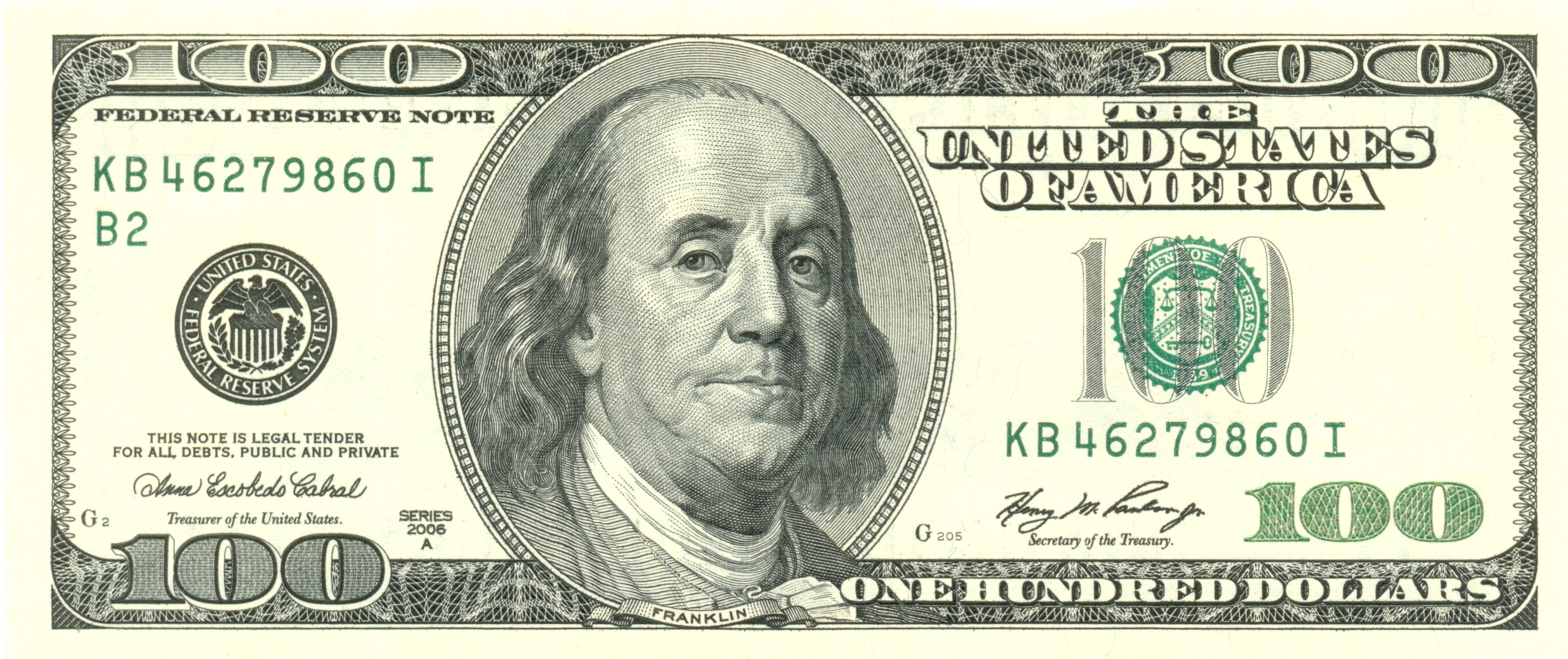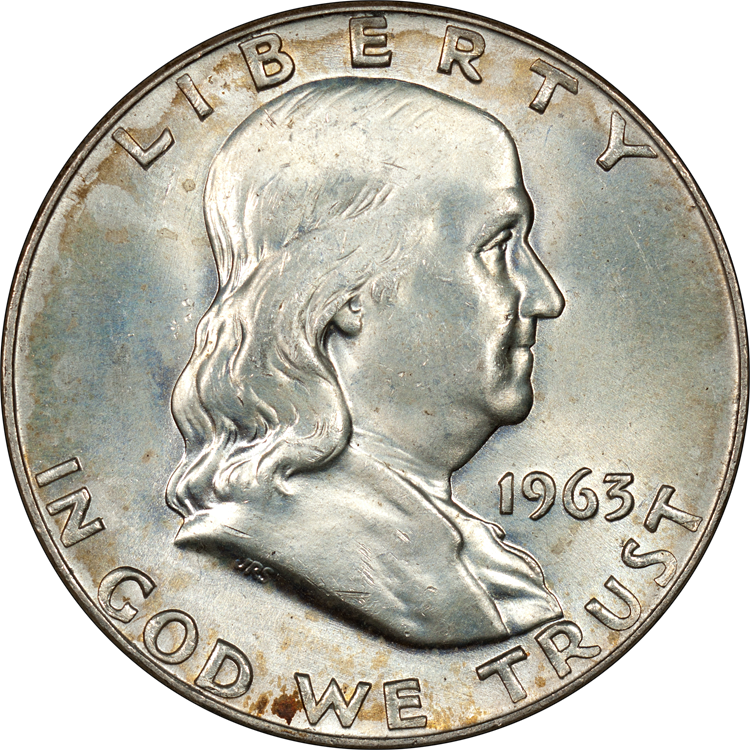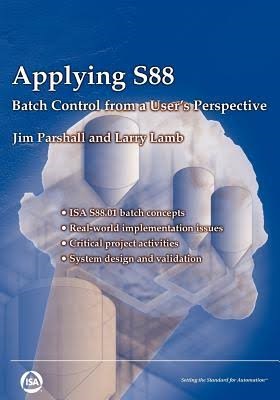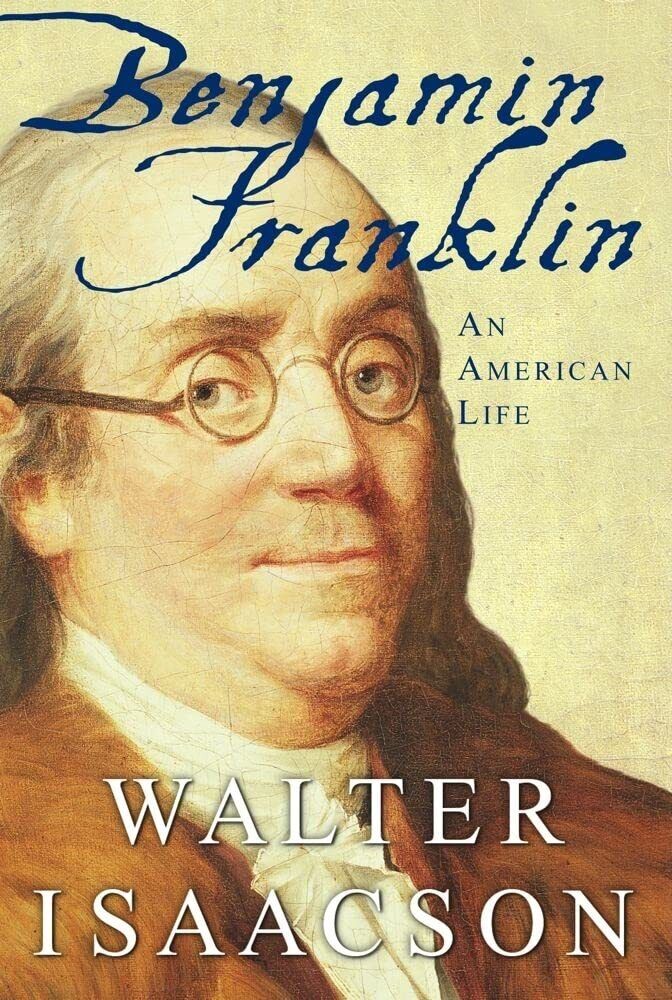
I likely would never have read a biography on Benjamin Franklin, if not for Walter Isaacson. Having read and thoroughly enjoyed his biographies on Einstein, Steve Jobs, and Leonardo DaVinci, I felt compelled to give this one a shot. It did not disappoint. I learned a great deal about Benjamin Franklin as well as a great deal about the formation of the United States.
Growing up in America when I did, the only stories I heard about Benjamin Franklin were that he was involved with the Declaration of Independence, the Constitution, and that he flew a kite in a thunderstorm. Hooray for public grade schools! I did often wonder why a guy who was never president, made it on the face of a $100 bill and a half dollar coin. There must be more to his story. There is in fact, much more.
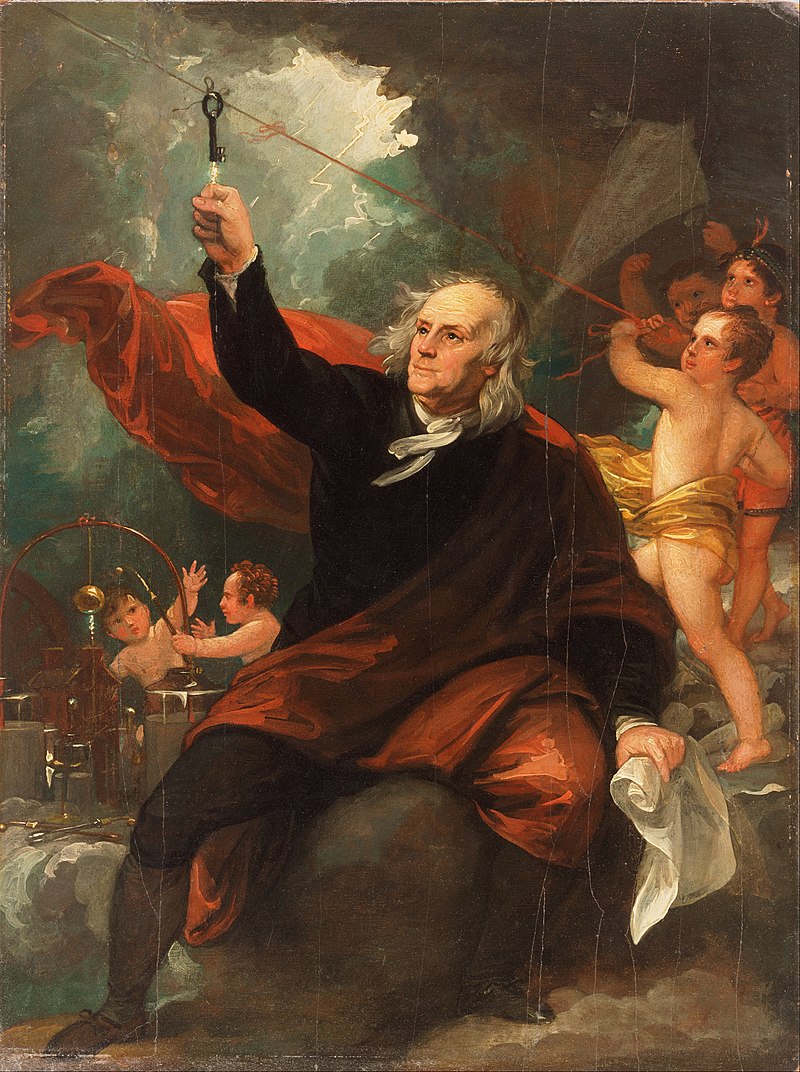
Franklin was born in what is now Boston. It was also called Boston when he was born, but it was in British America. Franklin had an older brother named James who was a fairly successful printer. As a youth, Benjamin was to apprentice with his older brother. His brother taught him the trade for a couple of years, but Franklin yearned to publish his own work. His brother did not allow this, so he fled to Philadelphia. Leaving an apprenticeship at that time was somewhat illegal. It was, however, also difficult to track someone down during that time. Franklin arrived in Philadelphia at 17 and used the skills acquired from working at his brother’s printshop to gain work. He then went to work in a printing shop in London for a few years before returning to Philadelphia.
Printing is where Franklin received his initial wealth and notoriety. He printed the Pennsylvania Gazzette and the Poor Richard’s alamanac. He often wrote stories and articles for his publications using assumed identities. His persuasive and often humor-laced writing was as responsible for his success as his printing and business skills. I found it quite interesting that one of the issues at the time of Franklin’s newspaper publishing was that of vaccination. Smallpox was taking many lives at the time. Franklin’s only legitimate son, Francis, died of the disease at only four years old. There was debate in Franklin’s newspaper and the competing papers of the time as to whether to vaccinate against smallpox. This appears to parallel our recent Covid controversy.
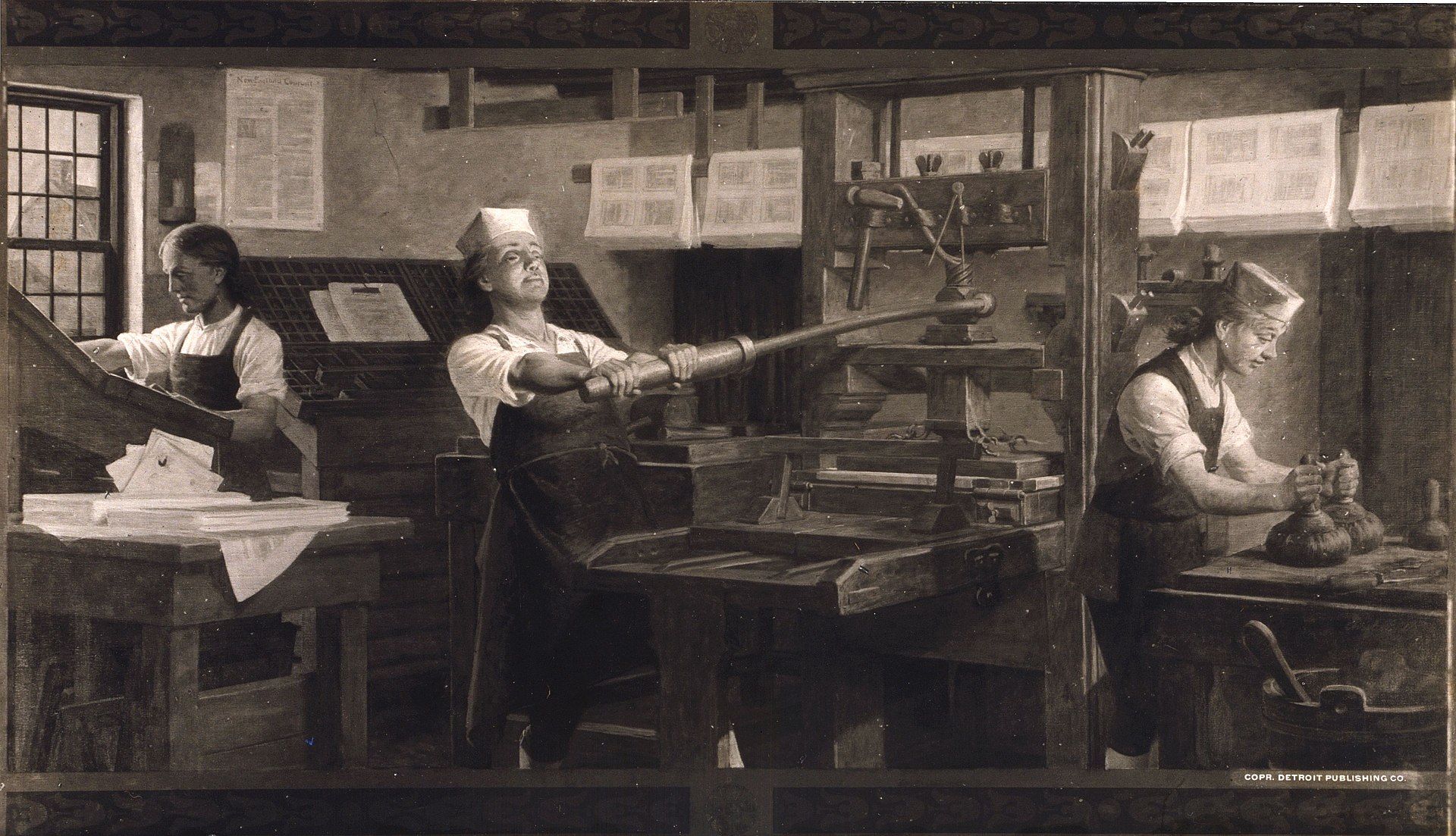
Franklin’s success in publishing afforded him the time and resources to pursue his varying interests. One of his prime interests was creating a better life for his fellow man. He created an organization called Junto to help that aim. Its members gathered regularly to do what they could to aid society. The result was public libraries and volunteer fire departments. That’s right, Ben Franklin invented the public library. He had a voracious appetite for reading books. He had very little formal education, but was a very intelligent man – especially for his time. His knowledge gained through reading books opened up opportunities for him and he felt that others should also benefit. A book was likely quite a luxury to the common man of his era, so it is probably incalculable the impact that this single creation of a lending library had on the world. Other than personal experience, there was no other way to learn about the world at that time. He is also the primary founder the University of Pennsylvania.
Franklin was constantly tinkering. Pondering the properties of waves in the ocean and lightning in the air. Back in his time, very little was understood about electricity. Franklin came up with the first theories of current flow. If anyone has ever taken a circuits theory class, you are told to follow the current path from + to -. This is not actually correct as the much lighter electrons (negatively charged) actually flow towards the protons (positively charged) particles, but there was no way to know this at the time.

This convention still works in DC circuit analysis and is employed in all electrical engineering courses taught today, despite the actual flow being counter. This stems from his famous kite experiment, through which Franklin came up with the lightning rod that is still employed on homes and buildings to this day.
Franklin, like many people, needed eyeglasses to see properly. At one point he had a set of glasses for reading and another for when he was going about his daily activities. Being a practical man, he instructed his eyeglass maker to cut the lenses of each in half. He put the top half of his regular use glasses above the half lense of his reading glasses. When he looked forward, he was looking through his regular glasses and when he looked down, he was looking through his reading glasses. This is how he invented the world’s first bifocals.
Franklin became one of the first postmasters in America. He devised methods for considerably shortening delivery times of mail and also benefitted his publishing business by controlling its delivery system. He eventually sold the rights to his publishing business and could have lived a very nice life without another day of work. This, however, would have gone against his nature. Franklin certainly enjoyed his leisure time, but remaining idle would go against his personal motto of living to improve himself and his fellow man. Given the time he lived in, he felt as though he would be a good intermediary between the colonial states and England. At the time England was increasing taxes at almost every opportunity. He saw that things were reaching a boiling point and spent significant time in England trying to smooth things over and prevent a war. With England unwilling to compromise, Franklin saw that war was imminent. At this point, he could have lived a gentleman’s life in England, but instead he recruited the French to help with the pending war against Britain. He secured funding, troops, and ships from the French. There was probably no way the colonies would have won the war against England without this.
As England realized they were going to lose the colonies, Franklin again negotiated Independence for the United States and peace between England, France, and the US. He did this as an 82-year-old man with gout and kidney stones. If he was a younger man, perhaps he would have been the first US president. His is the only signature on all the documents responsible for creating the United States – the Declaration of Independence (1776), the Treaty of Alliance, Amity, and Commerce with France (1778), the Treaty of Peace between England, France, and the United States (1782), and the Constitution (1787). He also helped draft both the Constitution and the Declaration of Independence.
I was struck by how much time the American-born Franklin spent in England. He spent two jaunts of 10 and 15 years living there, including the last 15 years of his marriage. His wife passed away after not having seen her husband for 15 years! He did not even attend her funeral. It seems that Franklin was master at maintaining friendly relationships, but quite disastrous at maintaining close, personal relationships. He left his brother Jame’s apprenticeship, which created a rift. James died at just 38 years old. His relationship with his son William was extremely strained for most of their adult lives. Franklin basically left him nothing in his will and barely communicated with him in the last years of his life. They also choose opposite sides during the Revolutionary war, with William being imprisoned for his taking the side of the British. Franklin only seemed to keep a close personal relationship with one person. Temple was the illegitimate son of Franklin’s illegitimate son William. He did maintain a lifelong relationship with his daughter Sarah, but she maintained his household after the death of his wife, so it may have been out of practicality that he maintained it.
Franklin saw a world based on the middle class and drafted the Constitution with the aim that people earn what they are entitled to based on work and merit, not on birth rite. He was born from almost nothing and ended up being a founder of the most powerful country on earth. He was the exemplification of what it should mean to be an American and that is why his face appears on the $100 bill.
